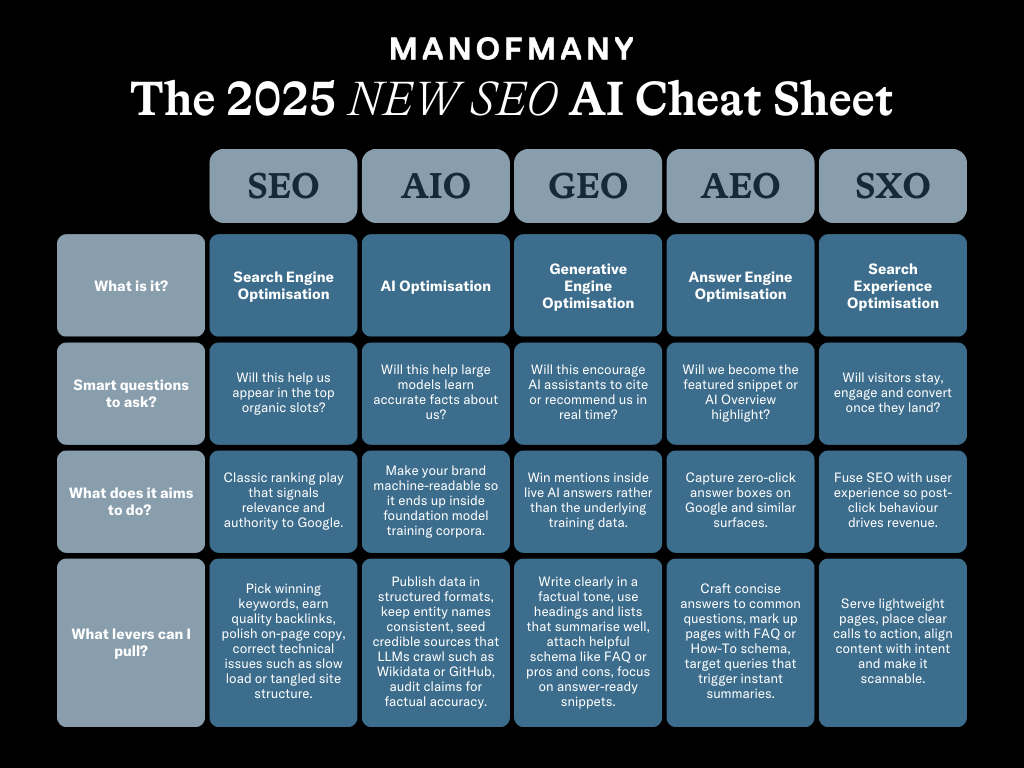The pace of AI is dizzying. Customer journeys are being compressed, search is being rewritten in real-time, and brand teams are scrambling to keep up.
But if you ask Man of Many publisher and co-founder Scott Purcell, the existential threats posed by large language models (LLMs), smart assistants, and AI-generated content can also be a once-in-a-generation opportunity, if publishers and advertisers adapt fast.
In a detailed LinkedIn post through his newsletter, Digital Media Digest, Purcell lays out a practical, and tactical, framework for how publishers can hold the line against AI-generated sludge and claim their place on the next frontier of attention.
Here’s the essence of his message:
Don’t fight the AI tide, learn to ride it
Smart assistants and AI agents are increasingly managing full purchase paths, from research to transaction. In this new world, the search bar is being replaced by summarised, spoken, or interactive answers. Blue links? Already on life support.
According to Purcell, the key to competing in this new environment is quality, structured, human content. Not just because it engages readers, but because it teaches the AI what “good” looks like.
In short: real journalism now feeds the machine.
Publishers need to “own the AI shelf”
One of Purcell’s biggest reframes? Treat AI summaries, answer boxes, and even voice snippets as premium real estate, not free traffic.
“You’ve got to optimise titles, schema, and imagery so AI bots can repeat your brand messages verbatim,” he writes. “Then back that exposure with top-of-funnel content, video, display, podcasts. Think surround sound, not just point-and-shoot.”
Forget backlinks, unlinked brand mentions are now the new currency of authority in LLM-driven land. PR, thought leadership and high-authority mentions feed the algorithm, even if the click never comes.

Scott Purcell, Man of Many
Make content modular, multimodal, and machine-readable
In a world where AI answers appear on smart speakers, dashboards and wearable screens, creativity has to be flexible. “Assets need to behave like Lego blocks,” says Purcell.
Man of Many has already built its content pages with semantic headings, ImageObject markup and transcripts, so AI agents can quote them without losing context.
This matters for both visibility and brand safety. “Every asset becomes a machine-readable answer block,” he adds, helping brands hit both attention metrics and the AI jackpot.
First-party data is the new competitive advantage
With cookies crumbling and identity signals fragmenting, Purcell argues that bringing your own ID is non-negotiable.
Man of Many is rolling out one-click sign-ins and passing UID2 IDs directly into the programmatic pipes, giving advertisers the precision of a walled garden, while staying rooted in the open web.
The publisher is also leaning hard into sustainability and provenance. It’s a certified carbon-neutral operation and part of the “100 Per Cent Human” editorial initiative, a signal to brands that the content isn’t AI sludge, but crafted and cleared by real editors.
Prepare your brand for AI-native discovery
AI visibility now hinges on structure.
Purcell suggests publishers run regular Lighthouse tests and Search Console audits to make sure content is being rendered, indexed and surfaced by agents like Google Gemini.
He also urges marketers to refresh their keyword strategy: “People type weirder, longer questions into AI,” he says. “So meet them where they are.”
And crucially, as traffic from social and search splinters, Purcell advises shifting KPIs to intent-based signals like scroll depth, attention seconds, and post-click conversions.

Track citation share, not just rank
With Google’s new AI Overviews already touching 1.5 billion users across 200 markets, Purcell says marketers need to start thinking beyond position and clicks. “Every mention inside an AIO is recorded as rank one, even if it doesn’t drive traffic.”
His advice? Add a “citation share” column to your weekly reports. Being named in an AI summary is now as important as being linked on page one.
Final word: choose motion over stasis
The AI shift is messy, fast and full of hype, but Purcell argues that the fundamentals haven’t changed. “First-party data, product experimentation, and diverse revenue lines are the lifelines,” he writes.
Agencies and publishers that move quickly and think like product companies will earn a seat at the new table. Those who don’t? “They’ll find the game has moved on without them.”
As he puts it: Failing to choose a direction is still a choice, and it’s almost certainly the wrong one.
